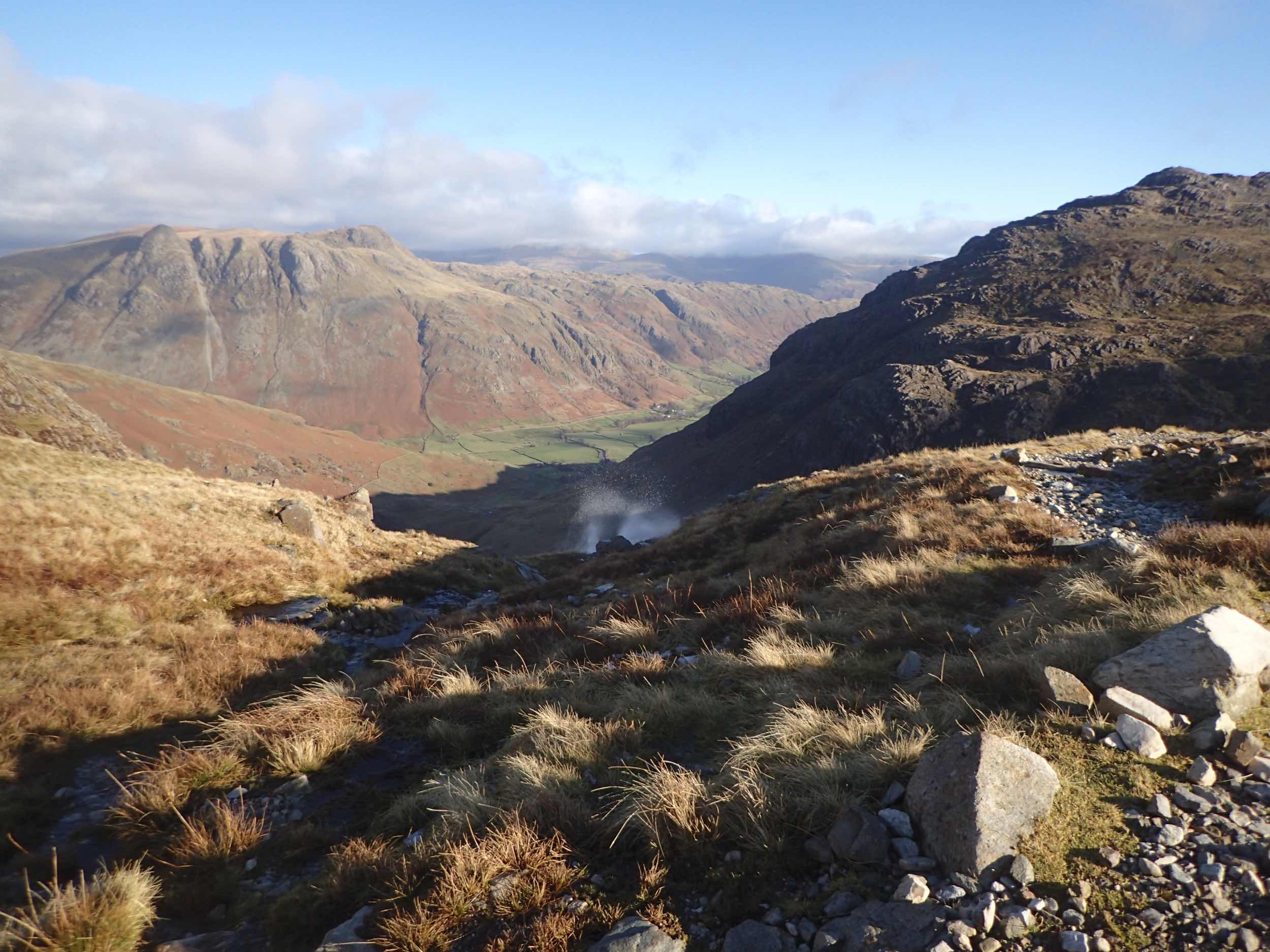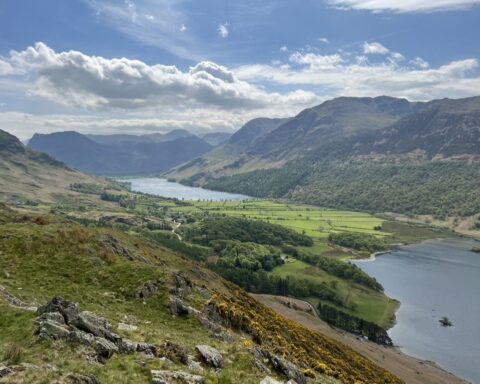The Langdale Pikes are possibly the Lake District’s most recognisable fells. You might not have heard their individual names before, but there’s a good chance you’ll have seen their knobbly tops and the knuckles of rock that make up their impressive façade countless times online or in brochures and books. They’re not the highest fells in the National Park, not by a long shot, but they are among the most popular.
Each of the Pikes has its own character. At 2414ft, Harrison Stickle is the highest and the haughtiest of the bunch, seemingly well aware of its iconic status and the knowledge that there’s always someone pointing a camera at it.
To the north-east is Pavey Ark (2296ft). Its seemingly impenetrable cliffs soar above the dark waters of Stickle Tarn. Look more closely though, and there’s a chink in its armour – Jack’s Rake, a trench that cuts diagonally across the rock face. One of the most popular scrambles in the Lake District, it has become an accident blackspot.
Viewed from surrounding fells, it is the rock dome of Pike o’ Stickle (2326ft) that is the most prominent of the Pikes. In Neolithic times, high up on its impossibly steep scree slopes, workers quarried an exposed seam of ‘greenstone’, a flint-like volcanic rock, and made axe heads from it, tools that were then traded throughout Britain.
The ‘other’ pike, the one people tend to forget about when they’re ‘bagging’ them, is Loft Crag (2237ft). Its best feature? Probably the view it provides of the better known and more loved Pike o’ Stickle next door. The Pikes are generally climbed from Great Langdale, the constructed path up Stickle Ghyll being a favoured approach. For a complete contrast, round off the walk by returning via the open expanse of Martcrag Moor and the steep-sided trench of Mickleden.





